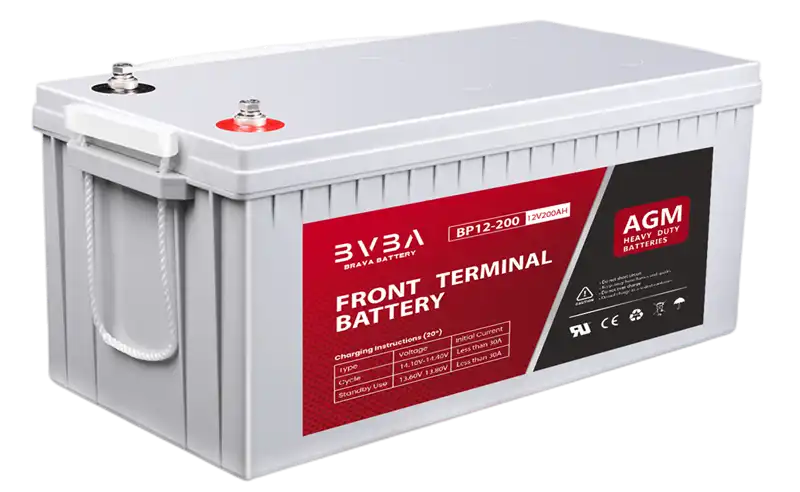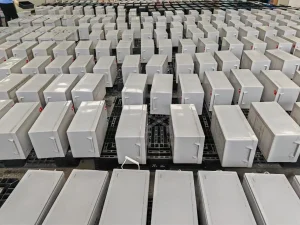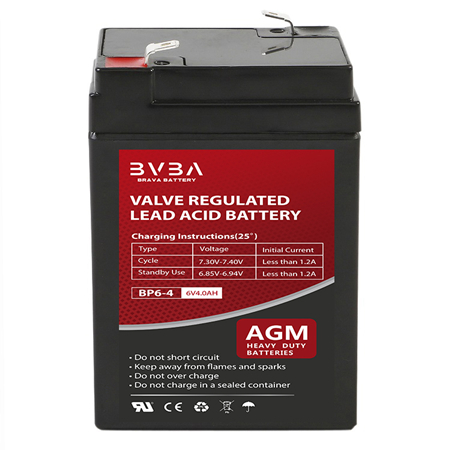FLOODED Battery vs Sealed AGM vs GEL Battery, What’s the Difference
Do you own a boat, golf cart, motorcycle, or recreational vehicle?
If you do, you’ve probably bought some batteries, had them installed and never looked at them again. This is a common mistake many vehicle owners make because some batteries require more than just scraping corrosion off of the battery terminals.
Most people who own a deep cycle battery buy either flooded batteries or sealed deep cycle.
The problem?
Most people don’t know the difference between the two. If you’ve ever pondered the differences between the two, then this article is for you. Below, we will show you the main differences between flooded batteries and sealed deep cycle batteries.
What Is an AGM Battery?
Absorbed Glass Matte or “AGM” batteries are the latest and greatest in lead-acid batteries. An AGM battery uses a separator consisting of fiberglass between the plate and wrappers to hold the electrolyte in its place with capillary action. Combining the lead plates, electrolyte, and fiber glass separation fibers in a confined space, AGM batteries create a “physical bond” by way of capillary action. Similar to how water creeps up a towel when it is put in a bathtub. This capillary action holds the liquid inside the glass matting, making the AGM Battery “spill proof” if it is ever exposed. Due to the tight packing of an AGM battery, it is also the most impact resistant, and boasts the least internal resistance. The lower internal resistance increases the output voltage, decreases charging time, and reduces losses to heat as power flows through the system. AGM Batteries then bring the trump card to the table, they are maintenance free. Premium AGM batteries recombine the gases produced internally, back into liquid. This recombination makes the AGM battery maintenance free. No acid leaks, no mess while charging, no corrosion on surrounding parts. You plug in these batteries and walk away. AGM batteries can do anything that flooded and GEL batteries can do, just better.
What Is a GEL Battery?
GEL batteries are also sealed just like the AGM battery listed above. That is where the similarities end. A GEL battery uses a silica (sand) to turn the sulfuric acid into a jelly like substance. This jelly is then used as the electrolyte. Great care must be taken with GEL batteries not to expose them to high amperage situations. High amperage situations can literally ‘SCAR’ the jelly inside of a GEL battery, creating a pocket. These pockets allow the plates to begin corroding, leading to premature failure. GEL batteries should not be used for fast charging/discharging, or high amperage charging/discharging situations. Use the other types listed above for these high amperage situations. GEL Batteries are slightly stronger in regards to internal construction than a flooded battery, but pale in comparison to the physical strength of an AGM battery.
What Is a Deep Cycle Battery?
A deep cycle battery is a lead-acid battery that is used to provide power for different applications such as boats, solar energy, and RV’s to name a few. They are designed to sustain power over long periods of time and can reliably run even when discharged between 60 and 80 percent.
It is important to note that most manufacturers recommend not discharging deep-cycle batteries more than 50 percent. This will extend the life of your deep cycle battery.
The difference between your car battery, also known as a starter battery, and a deep cycle battery is that a starter battery provides short bursts of energy to start an engine compared to a deep cycle battery where its primary use is to provide continuous power over long periods.
Using a starter battery would not be ideal to power the vehicle’s electrical systems for very long if the car is not running. If there’s a significant load running and the engine is turned off, the battery can be discharged within minutes.
What Is a Flooded Battery?
A flooded battery is a wet battery that has thick plates, large separators, and high-density paste material. This design resists the occurrence of corrosion from multiple charges and discharge cycles.
This battery type uses electrolyte fluid that completely submerges the plates. This fluid allows the battery to charge more efficiently and discharge at a steady rate.

Flooded or “wet cell” batteries are the most commonly used batteries on the market today. Flooded batteries come in the widest variety of shapes and sizes due to their widespread usage in a multitude of industries and applications. Flooded batteries again use lead plates, a sulfuric acid electrolyte, and plate separators but that is where it stops. Usually flooded batteries are not sealed, and do not recombine the gases to liquids internally. Instead, these gases are vented externally. Internal gases produced are released directly to the environment. Through these same vents can flow acid, steam, and condensation, leading to maintenance. Flooded batteries do require maintenance, in the form of water, to routinely replenish lost electrolyte through the vents. Lead plates start to deteriorate when they touch the atmosphere, so if you fail to maintain your batteries, they will corrode and fail. Flooded batteries hold very good rates of charge for the price, but require more work. Unfortunately due to the internal construction, flooded batteries have the weakest internal construction, and some very high internal resistance statistics.
What is the difference between a flooded battery and a AGM battery?
When focusing on the difference between AGM vs flooded battery, it is necessary to analyze the characteristics of the two separately. AGM batteries are maintenance-free, sealed and do not lose liquid over time. It gives the battery a longer life and increased power due to its more stable voltage than other types of batteries. AGM batteries are available in various voltages, capacities, shapes and sizes.
Flooded batteries consist of thick plates and large separations, it is an improved design of the internal structure of conventional lead-acid batteries. The design of this battery can prevent corrosion from occurring multiple times. It can withstand several recharging cycles in direct proportion to the amperage capacity of the charging source. The electrolyte fluid is distributed in a flooded battery that surrounds the plates in a contained space.
A common Deep Cycle battery question is whether to go for Flooded (or Wet lead acid) batteries or the newer Sealed (Gel or Absorbed Glass Matt (AGM)) types. Its not a simple answer but some of the pro’s and cons are listed below.
If you have other questions then feel free to drop in for a chat, or call/email us. We have good parking at the Stores and we can size up & test batteries with you to suit your needs.
Flooded vs Sealed
|
Lead-Acid vs GEL/AGM
|
AGM vs GEL
|
How do I know if my battery is AGM or flooded ?
AGM vs flooded battery, how to distinguish between these two types of batteries? There are several ways to identify:
- By reading manufacturer’s tag on the battery
Most batteries have a label with the manufacturer’s information, you can read it for more information to identify the type of battery.
- By taking a look at the surface of battery
Suppose the label can’t tell you anything about the type of battery. If it’s worn off or unhelpful, you can figure out what kind of battery it is by looking at how it’s built. There is a difference on the top of the battery between AGM vs flooded battery. The top of the flooded battery has a cover that can ventilate and prevent liquid splashing. Due to the evaporation and decomposition of water during use, the cover should be opened regularly to add distilled water and adjust the density of the electrolyte. Therefore, the flooded battery is also called an open battery.
- By shaking the battery
First, remove the battery from your device and shake it. If you feel any liquid wiggling inside the battery, you know it is a wet cell or flooded type of battery. An AGM battery wouldn’t have any wiggle because it contains acid trapped in the fiberglass mats.

Do AGM batteries last longer than flooded?
Comparing AGM vs flooded battery, AGM batteries are tended to last longer than conventional lead acid batteries. They also hold up better when not in use because of their low self-discharge rate.But lithium-ion batteries have a lower self-discharge rate of only 3.5% per month. Proper maintenance is essential for the AGM to keep functioning properly, and with proper use it canast up to 7 years. A flooded battery has a life of around 3-5 years only. As mentioned above, lithium batteries have a longer life and can be cycled 4000 times on the premise of one charge and discharge per day, that is, 10 years (4000/365≈10.96).
Can you use a flooded battery with AGM?
AGM batteries are made to charge differently from flooded batteries and should never be mixed. When you create a new battery pack, ensure all of the batteries in it are AGM, and all have been manufactured at about the same age and rating. If you put a flooded battery in an AGM charger, it will still be fully charged, but doing so could shorten your battery life.
Do AGM batteries charge faster than flooded?
For comparison of charging speed between AGM vs flooded battery, AGM batteries charge five times faster than a flooded battery. They also have a longer lifespan and higher depth of discharge, making them more efficient. They can sustain 80% of their charge, while the flooded battery is 50% DOD.
Which is better, AGM or flooded battery? Can you use a flooded battery in place of a AGM?
You may be wondering AGM vs flooded battery, which is better between the two? The battery plate of the flooded battery is completely immersed in the sulfuric acid electrolyte, and its instantaneous discharge current is large, but it cannot be continuously discharged in this way, nor can it be deeply discharged. At present, it is mainly used as forklift batteries for traction forklifts. Although AGM batteries are more expensive than flooded batteries, they have higher capacity stability over the life cycle and do not require as frequent maintenance as flooded batteries.
In addition, the acid solution inside the AGM battery is 100% sealed, which can reduce the risk of accidents and reduce the risk of environmental pollution. Therefore, it is not recommended to use flooded batteries instead of AGM batteries. In fact, out of the two, lithium-ion batteries may be a better choice. Lithium batteries are also maintenance-free, and their average cycle life is usually longer. In addition, lithium batteries have a greater energy density, which is lighter and has a higher capacity than flooded or AGM batteries in similar applications.

Does a Flooded Deep Cycle Battery Require Maintenance?
Yes. Like any other battery, you want to check for any corrosion at the contact terminals and any other signs of deformity to the battery. Such signs are bubbling from the top of the cell or any signs of burning.
If you see any of these symptoms, discontinue use and take it to a shop that works explicitly on batteries or replace the unit.
Specifically for flooded batteries, you want to make sure that the electrolyte level is where it should be. On every flooded battery, you will find one to three covers where the electrolyte fluid goes.
Some fluid will evaporate over time during the charge/discharge process. To check this, take the cover off of the cells and check the water level. If the water level is low, pour distilled water into the cell reservoirs until the water reaches the fill level.
An important tip is to only refill water levels when charging is complete. If you add water before or during an incomplete charge, this can cause the gases to expand and potentially damage the charging process. Although the maintenance process may seem like a lot, flooded batteries tend to last longer than sealed batteries.
Advantages of flooded deep cycle batteries include:
- Inexpensive
- Easy to troubleshoot
- Lasts longer than sealed batteries
What Is a Sealed Deep Cycle Battery?
A sealed deep cycle battery is also known as a VRLA maintenance-free battery. It is nearly identical to a flooded battery—the only difference is the electrolyte fluid is sealed into the battery. This is why they call it maintenance-free because you don’t have to maintain the electrolyte level manually.
One of the main benefits of sealed deep cycle batteries is that they don’t need to be upright and can be placed in different orientations. This would be ideal for boats or recreational vehicles that shake or move quite a bit.
Advantages of sealed deep cycle batteries include:
- Lighter
- Charges faster
- No regular maintenance is required
- Can be positioned in any orientation
- Does not require a “dangerous goods” label when shipped
- Smaller than a flooded lead-acid deep cycle battery
- Better for extreme temperatures
Types of Sealed Deep Cycle Batteries
AGM – Absorbed glass mat (AGM) are sealed batteries that use woven glass fiber separators. The electrolyte in the battery is suspended within a close distance to the active plates. This provides excellent charge and discharges efficiency.
GEL Batteries – This type is similar to AGM but is still considered to be a wet cell battery. Gel batteries are best used in high deep cycle applications such as off-grid living and solar.
Advantages offered by Flooded batteries:
- Initial costs that are easy on every pocket
- Water can be manually added when needed
- Good for high current applications
- Excellent tolerant of improper recharge voltages
- Easy replacement
- Some of the available designs are even good for deep cycle applications
- Excellent for working at extreme cold weather conditions
Which Deep Cycle Battery Is Right For Me?
In the end, deep cycle batteries may be right for one person’s needs, but not the other. Ask yourself these questions—what am I using these batteries for? What is my budget? Do I have time to maintain them regularly? Use the advice below to choose the battery that is right for you.
Choose a flooded deep cycle battery when:
- Use in extreme temperatures are not an issue
- You have time to maintain the batteries regularly
- You are looking for a cost-effective battery
- You have a well-ventilated area to store the batteries
- You want longer-lasting battery performance
- You want to be able to troubleshoot your battery manually
Choose a sealed deep cycle battery when:
- You prefer to go maintenance-free
- You need a battery that can be positioned in different orientations
- Budget is not an issue
- You are using the battery in extreme temperatures, hot or cold
- You want a fast-charging battery
Here at BRAVA Battery, we have the knowledge to answer all of your battery related questions. If you need help deciding which battery is right for your application, feel free to contact us, and we would be happy to help you out.

Tags: Flooded Batteries Sealed lead acid Batteries Flooded lead acid Batteries Factory 12v Flooded Batteries Factory
















